The past week has once again seen a trickle of 2020s enter the market, with highlight releases from the likes of the Guinaudeau family, Vignobles von Neipperg, and Domaine de Chevalier.
 A Lafleur line-up: Ella joins Baptiste Guinaudeau in Bordeaux to taste the 2020s
A Lafleur line-up: Ella joins Baptiste Guinaudeau in Bordeaux to taste the 2020s
One of the most in-demand wines from Bordeaux, Lafleur was released on Wednesday (2nd June) at a UK price of £526.67 per bottle. While samples have not been sent to critics abroad for the last two remote campaigns, Wine Lister’s CEO, Ella Lister tasted the 2020 at the estate. Giving it high praise, she notes “aristocratic blue fruit, cherries, and a relaxed smoky character” on the nose, and a mouthfeel that is “out of this world”.
For those unable to access the small-production grand vin, the estate’s Pensées de Lafleur, or the relatively new Perrières (in its third vintage since its official baptism following 15 years of research under the beta pseudonym, “Acte”) provide great-value alternatives, having been released at £113.33 and £47.50 per bottle, respectively.
Another promising pick for cellaring is d’Armailhac 2020, which released on Tuesday (1st June) at £33 per bottle. Former Director, Philippe Dhalluin (who retired last year) called d’Armailhac a “rugby player in black tie”, and this year, new Estate Manager, Jean-Emmanuel Danjoy calls it an “athlete in black tie”. Ella agrees, describing it as “very dense, but more athletic than some d’Armailhacs of old”.
Kicking off Wednesday’s releases at an opening price of £57.90 per bottle, Beychevelle 2020 was described by Ella as having a nose of “delicate flowers and hypnotising fraises de bois”, and a palate that shows “a rush of fresh fruit and the flowers again on the finish”. Beychevelle’s strong post-release track record may well encourage buyers to back the latest release.
The Neipperg family wines followed suit, having received strong critic praise across the board this year. Tasting the 2020s in London, the Wine Lister team were extremely impressed with La Mondotte, noting its heady, luscious black fruit, and dense yet velveteen texture. An alternative pick from the Neipperg properties for value, d’Aiguilhe was released at £12.10 per bottle, and is described by Wine Lister partner critic, Antonio Galloni (Vinous) as “bright, punchy and so expressive”.
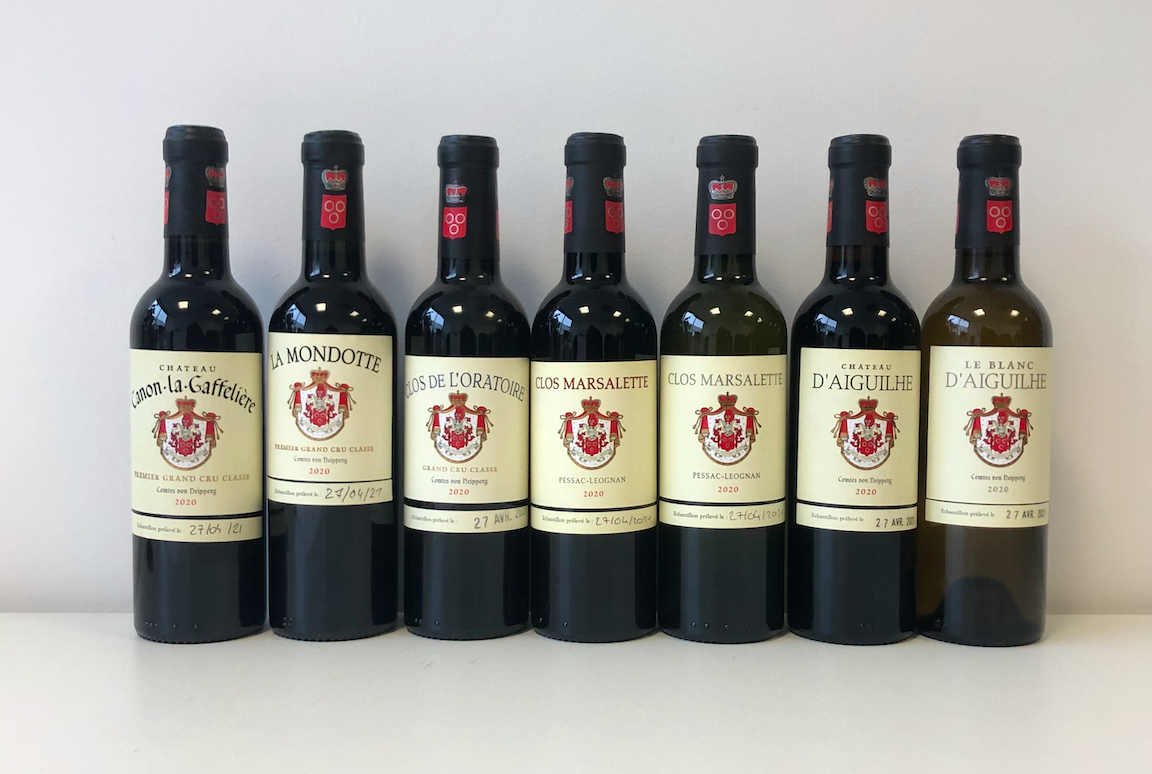 Vignobles Comtes von Neipperg: tasting the 2020s in Wine Lister’s London office
Vignobles Comtes von Neipperg: tasting the 2020s in Wine Lister’s London office
Released on Thursday (3rd June), Domaine de Chevalier Rouge and Blanc both receive strong praise from Antonio Galloni, who noted that “Domaine de Chevalier remains one of the most under the radar wines in all of Bordeaux”, and “The Blanc is one of the world’s great wines, hands down”. With both the red and white entering the market over 10% above the 2019 release prices (at £47.10 and £66.40 per bottle respectively), the rave reviews from Galloni should help find buyers.
Rounding out the week, Malartic-Lagravière and its white counterpart were released on Friday (4th June). Ella was impressed with the 2020, describing “deep, dusky fruit and a touch of spice” on the nose, and “a satin mouthfeel, beautiful midweight body, and a chocolately gravitas on its long finish”. At £28.90 per bottle, the latest release comes onto the market c.15% below the 2018 and even further below both 2015 and 2016 vintages (while sharing average critics’ scores), making this a very attractive buy.
Also released this week are: La Tour Carnet, Lagrange, Lascombes, Gazin, Les Ormes de Pez, Siran, Cos Labory, Pédesclaux, La Pointe, Sociando-Mallet, Clos du Marquis, Meyney, Potensac, and Grand-Puy-Ducasse.
As we approach the end of May, the Bordeaux 2020 en primeur campaign is still yet to kick off in full force. The past week has seen a slight lull in en primeur activity, with a selection of mid-level wines trickling onto the market.
Following Pentecost Monday, releases commenced on Tuesday (25th May), with Berliquet 2020 entering the market at £36.25. In the expert hands of Canon and Rauzan-Ségla‘s Nicolas Audebert since 2017, Berliquet is fast becoming a true Saint-Émilion gem to watch. Wine Lister CEO, Ella Lister, notes that she was “totally wowed by this wine – Berliquet’s best yet, on a vertiginous ascent”, detecting “flower pollen, verveine, fennel, and chamomile” on the nose, and a “grounded but melting” texture on the palate.
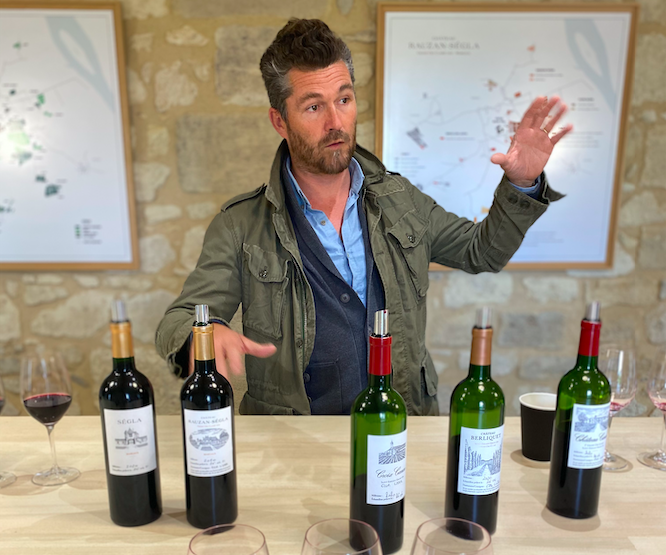 Nicolas Audebert – Winemaker at Rauzan Segla, Canon, and Berliquet (who released its 2020 vintage on Tuesday 25th May)
Nicolas Audebert – Winemaker at Rauzan Segla, Canon, and Berliquet (who released its 2020 vintage on Tuesday 25th May)
A trio of Margaux properties released their latest vintages on Wednesday morning (26th May), with Kirwan, Prieuré-Lichine, and Marquis de Terme 2020 entering the market in quick succession. At £25.37, Prieuré-Lichine’s latest release falls under the price of all recent back vintages in the market, while a score of 17 from Julia Harding for JancisRobinson.com places it in line with the well-regarded 2019 vintage. Offering good value for quality, the 2020 is described by Julia as “fragrant with the intense aromas of cassis and spicy black plum”, with a full palate that remains “nicely dry and fresh on the finish”.
Added to the mid-week haul is another Margaux estate, du Tertre, who this year received its highest ever score from Julia Harding for JancisRobinson.com (17+). Ella was also impressed by the latest release, which entered the market yesterday (Thursday 27th May), describing “charming, meandering fruit on the palate”. Having been sold by AJ Domaines (owners of fellow Margaux property, Giscours) this year, du Tertre is now under the helm of the Helfrich family, who have hired Cynthia Capelaere (formerly of Villemaurine) as the new Estate Director. As we often see following the sale and acquisition of an estate, this may be one to watch for future investment as it is revitalised by its new owners.
Also released yesterday, Quinault l’Enclos 2020 was described by Ella as “the culmination of the Cheval Blanc team’s work at this property since its acquisition in 2008”. Tasting in Bordeaux, she notes that “the trademark smoked notes have been relegated to the merest hint”, with “rich, dapper fruit” on the nose, and a palate with an “exceptional light-tough and melting mouthfeel”.
Also released this week are: Cantemerle, Chasse-Spleen, Château Les Cruzelles, Grand Corbin-Despagne, Larrivet Haut-Brion, Kirwan, and La Lagune.
As another week of Bordeaux 2020 en primeur releases draws to a close, the campaign has begun to show signs of speeding up, with some compelling releases entering the market over the past three days.
Below we examine releases from Laroque (Wednesday 19th), Lafon-Rochet (Thursday 20th), and Branaire-Ducru and Batailley (Friday 21st).
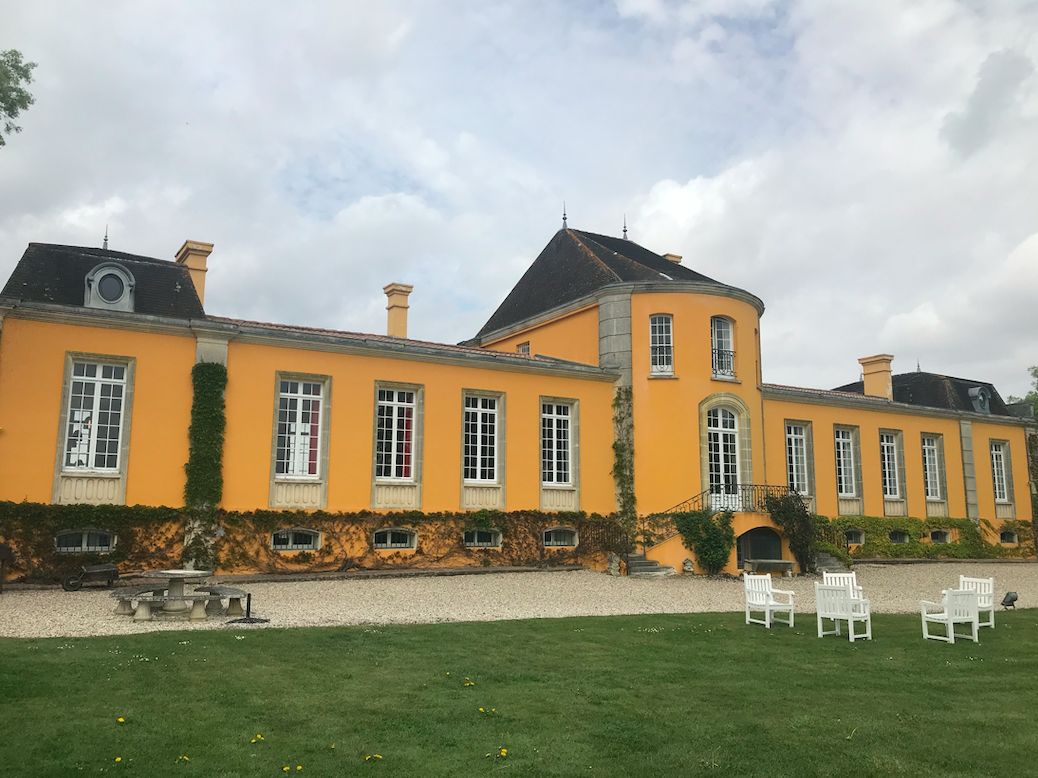 Lafon-Rochet’s latest release is a “very successful 2020”, according to Wine Lister partner critic, Jancis Robinson
Lafon-Rochet’s latest release is a “very successful 2020”, according to Wine Lister partner critic, Jancis Robinson
Released at £18.95 per bottle (in-bond), Laroque was described by Wine Lister CEO, Ella Lister as having an “ebullient, classy, very cassis nose”, developing into a “serious, structured wine on the palate”. The estate has seen recent improvements and investments to achieve a higher quality, starting with the hiring of David Suire in 2015, and the 2020 is no exception in the recent pattern of excellent value for money.
Lafon-Rochet’s latest vintage also illustrates the property’s upward quality trajectory. Having been awarded 17 points from Wine Lister partner critic, Jancis Robinson, (up from 16.5+ for the 2019) she describes it as a “very successful 2020” and congratulates owner, Basile Tesseron, for “producing something so appetising and groundbreaking”. Entering the market yesterday at c.£27.10 per bottle (in-bond), the vintage marks a year of development at Lafon-Rochet. As well as embarking on an agroforestry scheme in 2020 to enrich its environment, the latest release marks the inaugural collaboration of Jean-Claude Berrouet and Eric Boissenot, who worked together on its blending (recap our blog here). The price positioning of this top-quality vintage 10% below the 2019 market price has reportedly been very well-received.
Cru Classés Branaire-Ducru and Batailley were released this morning. Having made a name for itself as offering exceptionally good value within the Saint-Julien appellation, Branaire-Ducru’s latest release (at £31 per bottle in-bond) enters the market at an average 11% and 22% below than current availability of the 2019 and 2018 respectively.
Writing for JancisRobinson.com, James Lawther awards Batailley 2020 17 points, describing it as “Solid, subdued and distinctly Pauillac”. At c.£28 per bottle (in-bond), it enters the market under current average market prices of the last six vintages.
Keep track of en primeur releases on Wine Lister’s dedicated En Primeur Page here.
With the 2020 en primeur campaign now in full swing, the past two days have seen releases from the likes of Angélus, the Barton family, the Perse family, and more.
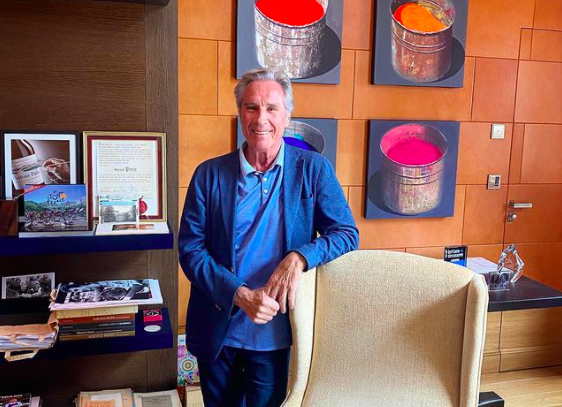 “Another big step in the right direction for this château in revealing its excellent terroir” – Wine Lister, CEO Ella Lister, who visited Pavie’s owner, Gérard Perse (pictured) last year
“Another big step in the right direction for this château in revealing its excellent terroir” – Wine Lister, CEO Ella Lister, who visited Pavie’s owner, Gérard Perse (pictured) last year
Released yesterday morning (Tuesday 18th May), the latest vintage of the Barton family wines – Léoville Barton, Langoa Barton, and Mauvesin Barton – has reportedly seen a positive uptake in the UK market already. Wine Lister partner critic, Jancis Robinson, gives high praise to the flagship release, Léoville Barton, awarding it 18 points, and noting that it shows “very fine winemaking indeed”, adding, “I have to admit I was tempted to swallow this, it was so majestic”. Wine Lister’s CEO, Ella Lister, also commends the latest vintage, describing a “sculptured structure which takes it into a different register”. The 2020 was released at £60.80 per bottle in-bond – over 10% higher than last year’s release, but potentially sporting the wine’s best quality to date.
Two more Saint-Émilion Grand Crus Classés “A” have joined fellow comrade and early-bird release Cheval Blanc, with Angélus entering the market at £254 per bottle (in-bond), and Pavie following closely behind at c.£241 per bottle (in-bond).
The latter gained resounding praise this year: James Lawther (for JancisRobinson.com) notes “absolute precision” which he says “more than highlights the change in style,” concluding, “one of the best yet”. Ella echoes this sentiment, asserting that “delightful floral freshness and a feather-light texture mark another big step in the right direction for this château in revealing its excellent terroir,” and calling the wine ”complex and refined”. The comments combined suggest that Pavie 2020 is the culmination of stylistic changes undertaken by the property over the last few years.
Perse family sibling, Pavie-Decesse 2020 was also released yesterday at £83 per bottle (in-bond). The latest vintage gains 17 points from James Lawther, who describes “Tension and minerality as well but plenty of charm this year”. With virtually no stocks of last year’s release remaining on the market, and the estate offering an element of rarity (at 3.5ha, it is a 10th of the size of Pavie), the latest release is likely to gain appeal beyond its volume released.
Also released so far this week are: Marquis d’Alesme, Labégorce, Coutet, Guiraud, Bellevue-Mondotte, and Monbousquet.
The Bordeaux en primeur 2020 campaign began in earnest last week, with Cheval Blanc the first of the major releases out of the gate. Its latest vintage was offered at a small, 3% increase on the 2019 release price, which itself came to market with a generous discount of c.30% on the previous year.
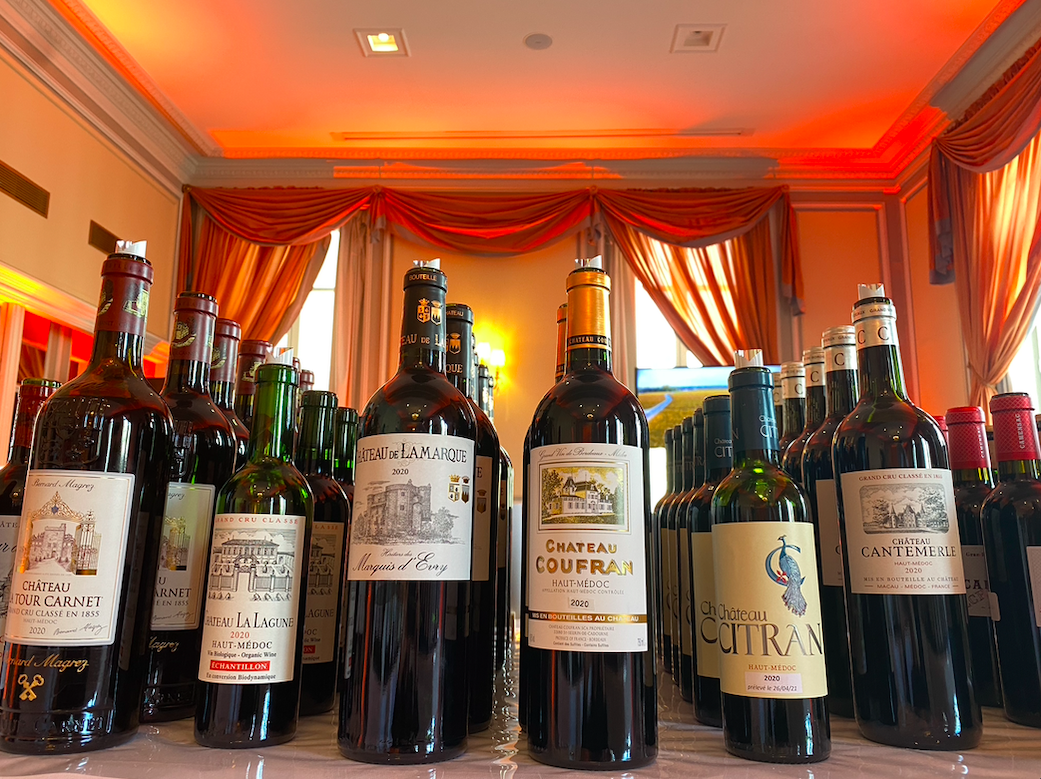 UGCB Tasting at The Intercontinental Hotel Bordeaux, attended by Wine Lister CEO, Ella Lister
UGCB Tasting at The Intercontinental Hotel Bordeaux, attended by Wine Lister CEO, Ella Lister
Absence makes the heart grow fonder
Much of the international trade has entered into a second consecutive year without the normal en primeur tasting week in situ. Instead, the bordelais have generally come up trumps with sending samples this year (only a very small handful of châteaux have declined to send any at all), and in many cases, one-on-one video calls have replaced the fleeting group tasting slots at the estates. Edouard Moueix, Managing Director of Etablissements Jean-Pierre Moueix observes how this has actually been a help, rather than a hindrance, in telling the story of the vintage to clients: “we can take time to explain things like we did some years ago”, he says. With a much wider range of tastings this year (albeit remotely for most) and a slightly less condensed campaign schedule, this should allow room for lesser-known wines that have excelled in the vintage to shine, where last year the sale of 2019s at lightning speed favoured well-known and trusted brands in the main.
While pricing is more often than not the hot topic for many participants in en primeur campaigns, sales of 2020 have the potential for focus on the great stories of each individual Bordeaux estate, given that the price equation this year is perhaps simpler than it has been in recent years.
Following a broadly successful “price reset” through the 2019 campaign, Bordeaux is holding all the cards that should ensure en primeur sales of 2020 work just as well (if not better), riding the wave of renewed interest in Bordeaux created last year. If 2019 prices set the precedent, then all that need happen now is to follow suit – matching last year’s release price, since the quality of 2020 for the majority of wines does the same. A healthier GBP-Euro exchange rate than existed last year should also help to keep price tags attractive, and choices for top-quality, excellent-value wines will hopefully be available in spades.
Follow Wine Lister’s en primeur analysis here on our blog, where we will be highlighting top picks from the 2020 vintage as they are released.
Recap Part I of our Bordeaux Study here for further analysis of en primeur pricing.
Cheval Blanc 2020 was one of the first key releases out of the gate for this year’s Bordeaux en primeur campaign yesterday.
Having tasted in Bordeaux last week, Wine Lister’s CEO, Ella Lister, hails the wine “restrained and profound” on the nose, with “dark, hypnotic fruit”. The palate, she says, is “straight-lined, mineral, mouth-watering and fresh”, with an “incredibly long, saline finish”. As one of her favourite wines of the vintage, she would potentially give it a perfect score.
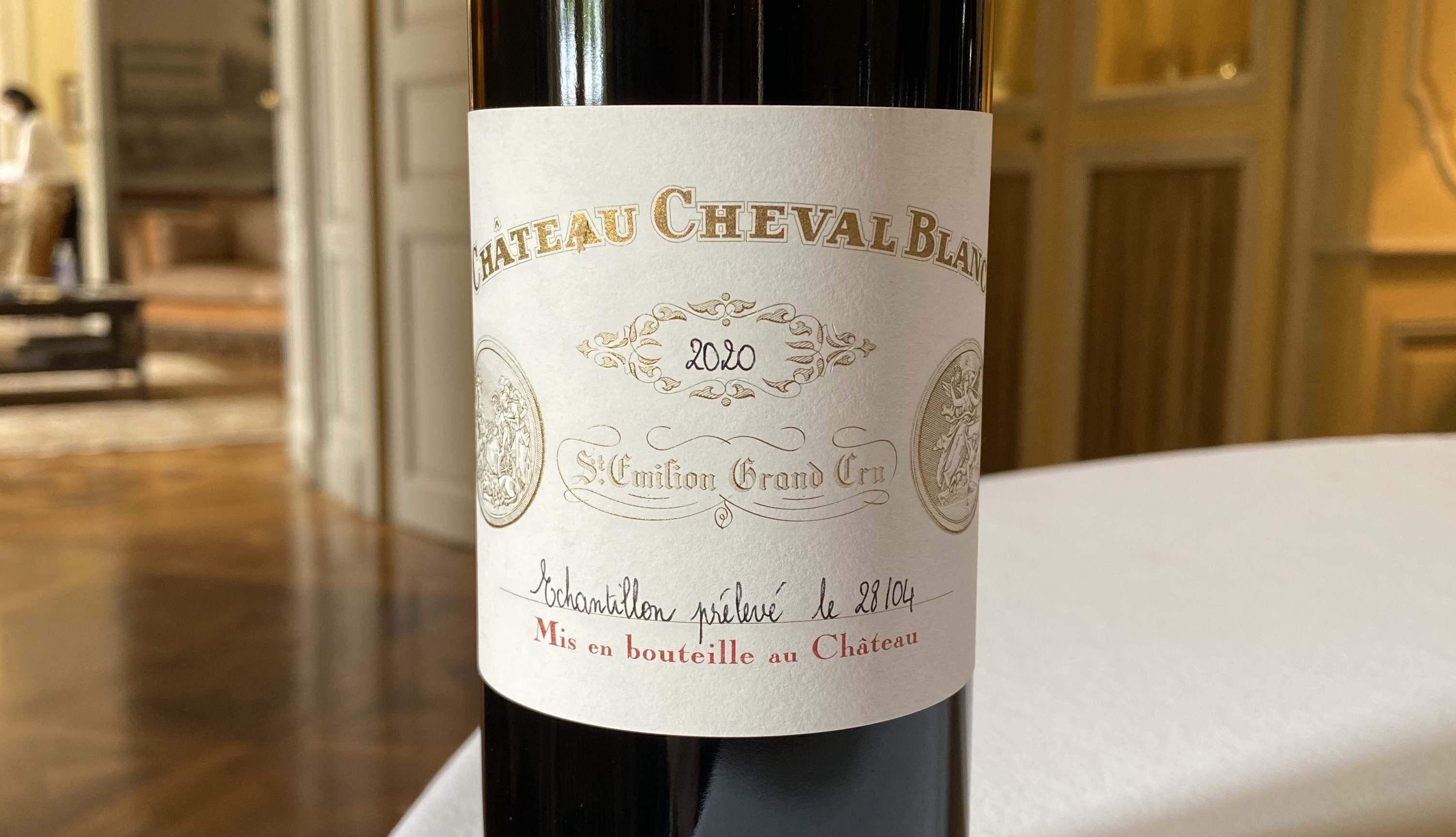
Technical Director, Pierre-Olivier Clouet notes that 2020 is cut quite differently from recent years at the estate. He characterises the vintage at Cheval Blanc in “three major waves”. First, the humid spring encouraged the vines to grow calmly and homogenously, accumulating water and nutrients much needed later in the season. The second wave was one of drought, which Clouet explains gives Cheval Blanc 2020 “a deep, tannic structure – dense but not hard, firm but not dry, ripe but not cooked”. Balancing this is Clouet’s “third wave” – a period of intense heat towards the end of the summer. With temperatures during harvest reaching 38-39 degrees Celsius, the hot spell translates into a very “expressive, intense, crisp, and aromatic nose”, and a freshness on the palate thanks to quick picking, within 20 days (half the usual duration).
Cheval Blanc 2020 was being offered by UK merchants at around £380 per bottle in-bond – 3% above the 2019 release price, but well under the price of any small remaining quantities of 2019 currently available on the British secondary market. Last year’s gesture on pricing was exceptionally well-received, and the 2020 will likely be no exception.
With the bank holiday weekend approaching, Wine Lister has selected 10 mature Bordeaux MUST BUYs that promise to please with your Easter Sunday lunch. Boasting at least nine years of ageing, these top picks are available to purchase for under £100 (per bottle in-bond, when purchasing by the case in general).
Check out all of our Bordeaux MUST BUYs here, or read more below.
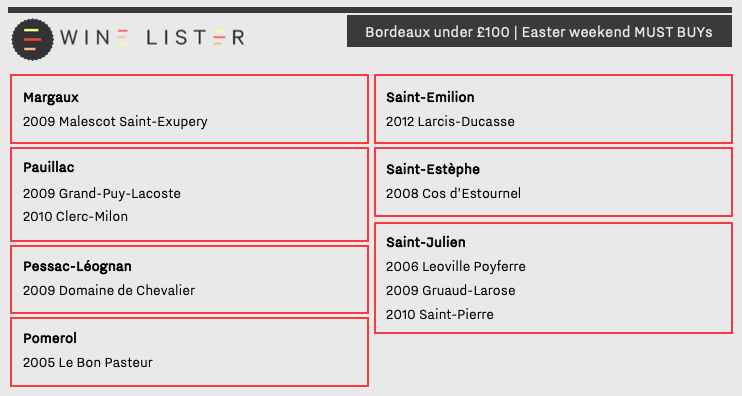
Regarded as a top-quality year for Bordeaux across appellations four of the 10 MUST BUY picks hail from 2009. Following a wet spring that provided plentiful water reserves, the summer of 2009 saw almost perfect growing conditions with minimal disease pressure, and many great wines from the vintage are beginning to either their optimum drinking window.
Described by Wine Lister partner critic, Jancis Robinson, as “very winning and opulent” with “massive volume and finish”, Margaux’s Malescot Saint-Exupery achieves a WL score of 93 in 2009. The property has exhibited an upward quality trajectory since the turn of the century, with the legendary Michel Rolland consulting on its production of a single, unfiltered and unfined wine. The 2009 vintage can be purchased from Fine+Rare for £71 per bottle (in-bond).
Grand-Puy-Lacoste’s 2009 vintage receives 18 points from Robinson, who notes; “a very sweet start. Herbal and interesting. Lots of fine tannin and savour. Very distinctive and ambitious”. Marking the estate’s highest WL score since its 1990 vintage (94), the 2009 is available to purchase from Bordeaux Index for £59 per bottle (in-bond).
Another classic left bank brand, Gruaud-Larose’s 2009 is described by Wine Lister partner critic, Neal Martin (Vinous), as offering refined aromas of “blackberry, cedar and leather”, and a “fine bead of acidity [with] great precision on the brown spice infused finish”. Hailed for the longevity of its wines, this can be enjoyed now, or aged for at least 10 more years. It is available from Bordeaux Index for £81 per bottle (in-bond).
Moving across to the right bank and back a few vintages, 2005 Le Bon Pasteur achieves the property’s highest ever WL score (94), and is described by Wine Lister partner critic, Bettane+Desseauve as offering notes of “dark fruits and fine chocolate”, and a “refined tannic structure, brilliant length and freshness”. With over 15 years of age, and only 2,500 bottles released, it has limited remaining market availability, but can be sought out for £100 per bottle (in-bond) from Cru World Wine.
Slightly south in Saint-Émilion, our chosen younger offering from Larcis-Ducasse – the 2012 – is available from Cult Wines for £41 per bottle (in-bond), making it the least expensive of the group. While rain in October forced many left bank estates to pick their late-ripening Cabernet Sauvignon earlier, the predominance of Merlot on the right bank saw its wines perform comparably better in 2012. Wine Lister partner critic, Jeannie Cho Lee, describes the 2012 Larcis-Ducasse as an “elegant, full bodied red with opulent tannins and wonderful energy”.
Last but not least, Saint-Estèphe star Cos d’Estournel makes the cut for its 2008 vintage. Robinson describes it as “very luscious and round” with a “strong blackcurrant element” and “surprisingly gentle tannins”. Achieving a WL score of 94, it is available to purchase by the bottle from Lay & Wheeler for £88 (in-bond).
On 11th February, Sassicaia 2018 was released at £150 per bottle (in-bond), 6% up on the release price of the 2017.
Wine Lister attended an online tasting of this new release, as well as Guidalberto and Le Difese 2019, hosted by Armit Wines and Sassicaia’s third-generation director, Priscilla Incisa della Rocchetta. Armit’s Managing Director, Brett Fleming noted the uptake on all three wines has been excellent: “it has been an extremely successful launch from Tenuta San Guido over the past two weeks. Update and demand have been far in excess of anything we’ve been able to manage”.
Though all three wines are made in the large majority from international grape varieties, Priscilla’s observation that “Cabernet [has] found its sense of place in Bolgheri” shines through the wines. Each has its own distinct character, but with a fundamentally Tuscan undertone.
Background
Sassicaia began as the passion project of Marchese Mario Incisa della Rocchetta. While studying agriculture at the university of Pisa, he developed a penchant for wine from Cabernet vines, and subsequently invested in his own, so as to have wine for his family and friends that appealed to his tastes.
During the Zoom tasting, Priscilla told us that in the 1960s, Marchese Mario’s third son, (and Priscilla’s father) Marchese Nicoló, managed to convince him to begin distributing the wine, “transforming his hobby into something resembling a business”. Over the last half-century, the agricultural focus of Sassicaia’s 2,500-hectare estate has shifted increasingly towards top-quality winemaking. Still continued today nonetheless is the breeding of race-horses on the estate, as well as the preservation of a 500-hectare wildlife reserve.
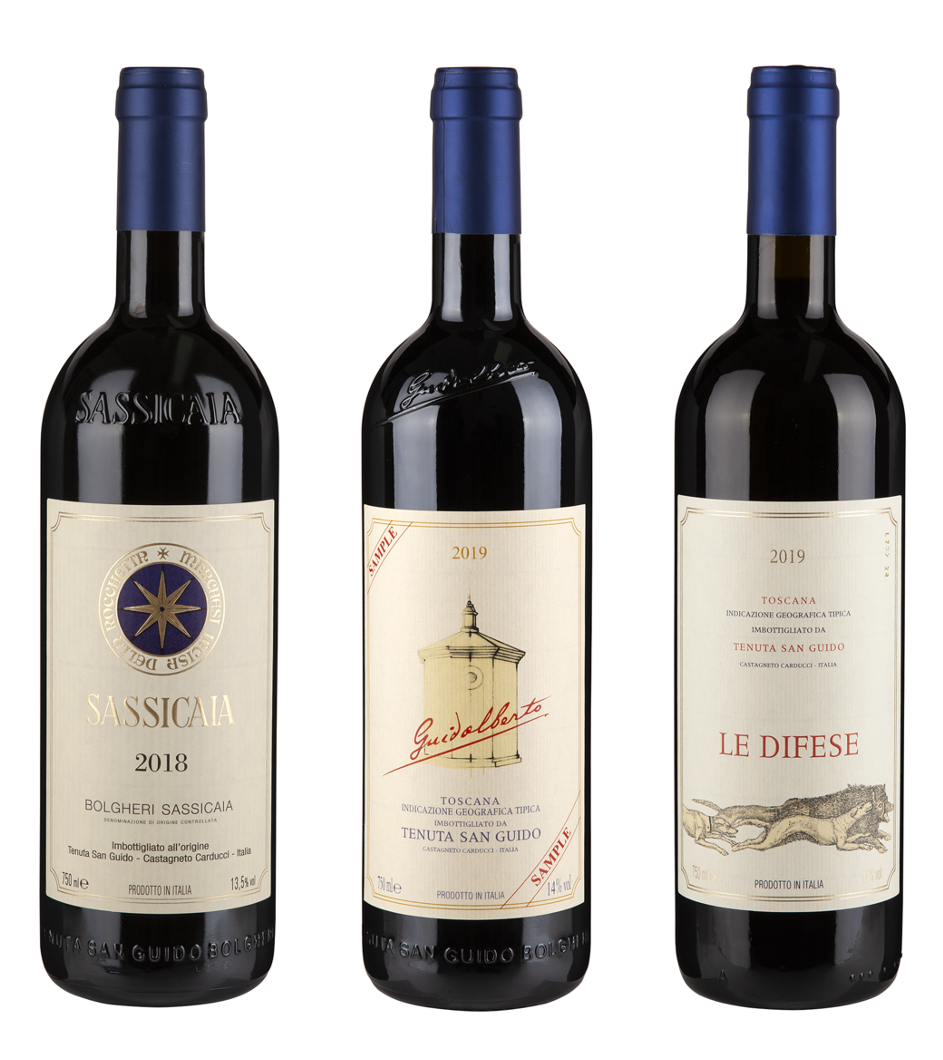 Official photos courtesy of Tenuta San Guido
Official photos courtesy of Tenuta San Guido
Sassicaia 2018
This is the 50th vintage of Sassicaia to be released onto the global wine market. Priscilla notes that “8” is usually a lucky number, and this was the case once again for the growing season resulting in this year’s anniversary release.
The wine leaps from the glass, with an energetic nose featuring suave red fruit, and a floral note of cherry blossom. The palate shows great depth – red cherries and plums as well as an earthier undertone, matched with a fine, elegant texture, particularly lifted by the wine’s vibrant acidity.
Guidalberto 2019
The only wine of the three tasted from a cask sample, the latest release from Guidalberto shows a sultry wine with impressive structure, yet seamless integration of its elements. The fruit profile is darker than its big cousin, but the same lift and freshness resounds on the palate, giving the wine a round and long finish.
Priscilla explains that the 2019 vintage was “warmer than other preceding vintages, not as much as 2017 or 2012, but comparable with 2009”. She continues, “we had a dry and mild winter, cool and rainy spring, but a regular summer, apart from rain during the middle of August which brought fresh air that allowed grapes to stay longer on the vines”. This small interruption to the ripening gave the Merlot a little extra time to soften.
She shares with us during the tasting the big news for Guidalberto – after postponing building plans for a brand new cellar of its own due to Covid restrictions, the works are finally underway, and the wine is set to have its own home, completely separate from Sassicaia, by 2023.
Le Difese 2019
After nearly 20 years in production (its first vintage was 2002), Le Difese proves itself a vibrant and well-balanced drinking wine. The 2019 shows an intense and immediate nose of sour cherry, and pure, juicy red berries on the palate.
Priscilla comments on its design; “[It] should be a wine that’s easy to drink, enjoyable young, aromatic but with some good structure because of the Cabernet Sauvignon”. The winemaking team has chosen to increase the amount of Sangiovese in the blend of the 2019 (from 30% up to 45%), so as to better service market demand for an easy-drinking wine that is approachable younger.
Home to a range of grape varieties, styles, and DOCGs, Tuscany also offers excellent wines at a variety of price points. To help you on your hunt for a top Tuscan bottle within your budget, Wine Lister has compiled a selection of Tuscany MUST BUYs at five different price points.
Click here to view all Tuscan MUST BUYs, or read more below.
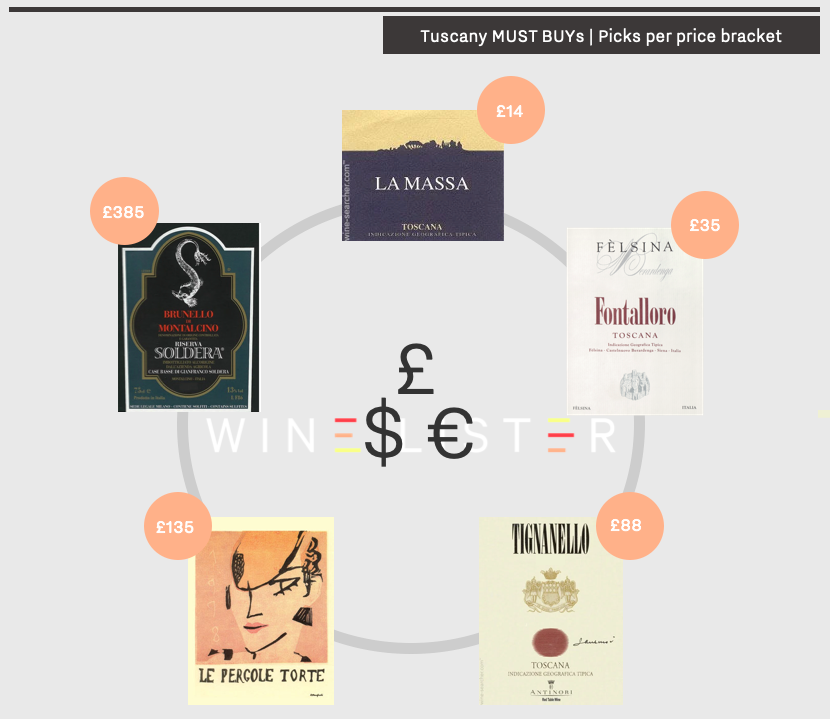 Prices are shown per bottle in-bond (when buying by the case).
Prices are shown per bottle in-bond (when buying by the case).
Under £20 – 2011 Fattoria La Massa La Massa
Founded in 1992 by prominent Chianti winemaker, Giampaolo Motta, Fattoria La Massa represents his aim of applying Bordeaux vinification techniques to a Tuscan terroir. With the counsel of famed Bordeaux vigneron, Stéphane Derenoncourt, Motta now grows Cabernet Sauvignon, Merlot, and Petit Verdot alongside native Sangiovese. La Massa comprises 60% Sangiovese, 30% Cabernet Sauvignon, and 10% Merlot in 2011, and is described by Wine Lister partner critic, Antonio Galloni as “jumping from the glass with dark red cherry, raspberry jam, plum, spices, violets, smoke and cloves”. With a WL score of 92, it is available to purchase from Bordeaux Index for £16 per bottle (in-bond).
Under £50 – 2015 Felsina Fontalloro
Felsina has seen a significant shift toward organic and biodynamic practices since its founder, Domenico Poggiali’s son-in-law, Giuseppe Mazzocolin, took over in the late 1970s. As well as investing heavily in a more natural viticulture, the estate has adopted a dedication to revealing the expression of its terroir. The 2015 Felsina Fontalloro was awarded 96 points from Antonio Galloni, who indeed notes that “sandy soils confer aromatic intensity to this super-expressive, arrestingly beautiful wine”. It can be purchased from Brunswick Fine Wines for £44 per bottle (in-bond).
Under £100 – 2016 Tenuta Tignanello Tignanello
Antinori’s Tenuta Tignanello property fared notably well in 2016, with its namesake wine, Tignanello achieving its joint-highest WL score alongside its 2015 vintage (98). Antonio Galloni describes the 2016 Tignanello as “flat out stunning”, and muses, “I don’t think there is another wine anywhere in the world made entirely from estate fruit that can match Tignanello for quality, consistency and value”. A blend of 80% Sangiovese, 15% Cabernet Sauvignon, and 5% Cabernet Franc, it can be acquired from Fine+Rare Wines for £92 per bottle (in-bond).
Under £200 – 2015 Montevertine Le Pergole Torte
Considered a difficult place for any agricultural production, Radda was an unusual location for Montevertine’s founder, Sergio Manetti to establish his property in 1967. In one of the highest and rockiest sites in Chianti Classico, its steep hills are now home to top-quality Sangiovese vines from which its three wines – Pian del Ciampolo, Montevertine, and Le Pergole – are produced. Antonio Galloni awards 97 points to the 2015 Montevertine Le Pergole Torte, calling it “deep, powerful and resonant […] exotically ripe and flamboyant, not to mention utterly captivating”. It can be bought from IG Wines for £129 per bottle (in-bond).
Over £300 – 2008 Soldera Case Basse Sangiovese
Achieving 18 points from Wine Lister’s partner critic, Jancis Robinson, Soldera’s 2008 Case Basse Sangiovese is described as “so different from most Brunello” with a “reserved nose of autumnal leaves”, and a “real tang on the end”. Having separated from the Brunello di Montalcino DOCG in 2006, all vintages from 2007 onwards are labelled as Toscana IGT. The 2008 marks a shift away from the estate’s usual vinicultural methods, having been aged for a period in stainless steel before bottling. Antonio Galloni notes that it is indeed “quite different from virtually every other wine made at Case Basse”. The 2008 Case Basse Sangiovese can be bought from Fine+Rare Wines for £387 per bottle (in-bond).
Widely considered the most romantic (if most expensive) day of the year, Valentine’s day often brings with it pressure to spend more to prove one’s admiration. To help you avoid compromise on your Valentine’s day drinking, Wine Lister has put together a list of red Value pick MUST BUYs with WL scores above 95.
Click here to view all red Value pick MUST BUYs, or read more below.
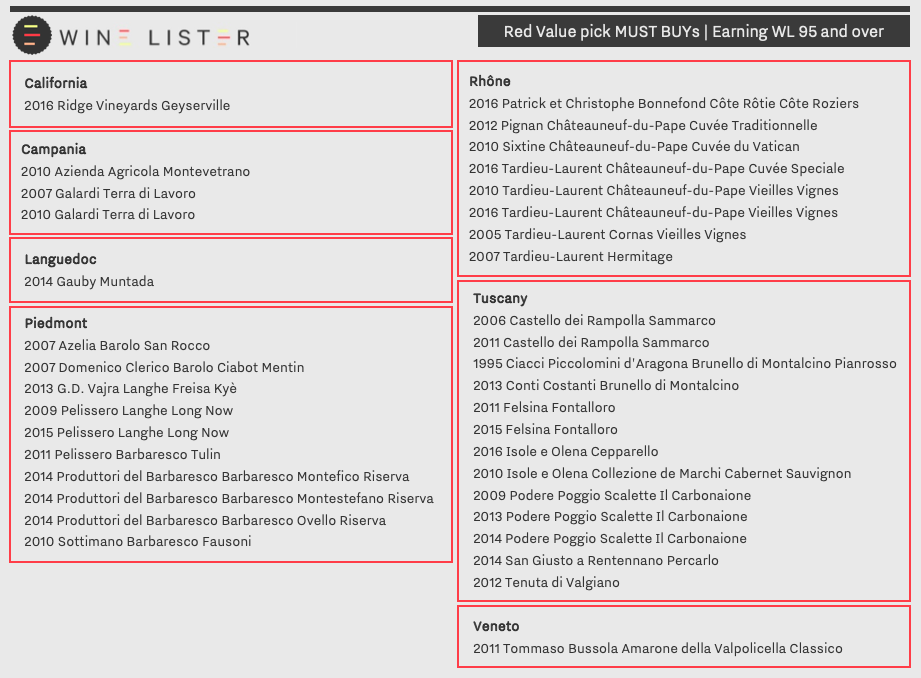
Of the 37 red Value Pick MUST BUYs earning WL 95 and over, a substantial 27 wines hail from Italy, suggesting the impressive quality-to-price ratios offered by many of the country’s producers.
A passion for Piedmont
Famed Piedmont cooperative, Produttori del Barbaresco appears three times on the list, with the 2014 vintages of its Montefico Riserva, Montestafano Riserva, and Ovello Riserva. Despite hailstorms damaging several Barbaresco vineyards in 2014, Produttori’s premium sites are subject to rigorous grape selection, meaning its single-vineyard wines retained quality in the vintage. Achieving the highest score of the three labels from Wine Lister partner critic, Antonio Galloni (96) who calls it a “potent, structured Barbaresco”, the Montefico Riserva can be purchased from Hatton & Edwards for £42 per bottle (in-bond).
Tenderness for Tuscany
Moving further south, Podere Poggio Scalette’s Il Carbonaione is represented by its 2009, 2013, and 2014 vintages, which all achieve WL scores of 95. With over 10 years of age, the 2009 is described by Wine Lister partner critic, Jancis Robinson, as offering a “very voluptuous, exotic nose”, with notes of “both herbs and spices – and some meatiness […] very exciting and bursting with health”. It can be bought from Atlas Fine Wines for £33 per bottle (in-bond).
A romance with the Rhône
Family-owned, micro-négociant, Tardieu-Laurent represents five of the eight Rhône Value picks, with its 2016 Châteauneuf-du-Pape Cuvée Speciale, 2010 Châteauneuf-du-Pape Vieilles Vignes, 2016 Châteauneuf-du-Pape Vieilles Vignes, 2005 Cornas Vieilles Vignes, and 2007 Hermitage. Despite its small-scale production (a consequence of its meticulous selection process), Tardieu-Laurent offers excellent value across its labels. Jancis Robinson awards 18 points to the 2016 Châteauneuf-du-Pape Vieilles Vignes, noting it is “very aromatic and then so sweet and round on the palate! You want to gobble it up immediately”. It can be purchased by the case of 12 from Tardieu-Laurent’s exclusive UK agent, Corney & Barrow for £390 (in-bond).
Caring for California
Representing the New World, Ridge Vineyards’ Geyserville appears in the line-up with its 2016 vintage. A single-site blend of 73% Zinfandel, 17% Carignan, 7% Petite Syrah, and 3% Alicante Bouschet, it achieves a WL score of 95, and is described by Antonio Galloni as offering “black cherry, graphite, lavender, and spice”, with “a purity […] that is absolutely striking”. Also noted by Jancis Robinson as having “snug, focused aromatics with hints of floral lift” and “a palate bursting with flavour”, the 2016 Geyserville can be acquired by the bottle from Lay & Wheeler for £33 (in-bond).
 A Lafleur line-up: Ella joins Baptiste Guinaudeau in Bordeaux to taste the 2020s
A Lafleur line-up: Ella joins Baptiste Guinaudeau in Bordeaux to taste the 2020s  Vignobles Comtes von Neipperg: tasting the 2020s in Wine Lister’s London office
Vignobles Comtes von Neipperg: tasting the 2020s in Wine Lister’s London office





 Official photos courtesy of Tenuta San Guido
Official photos courtesy of Tenuta San Guido
